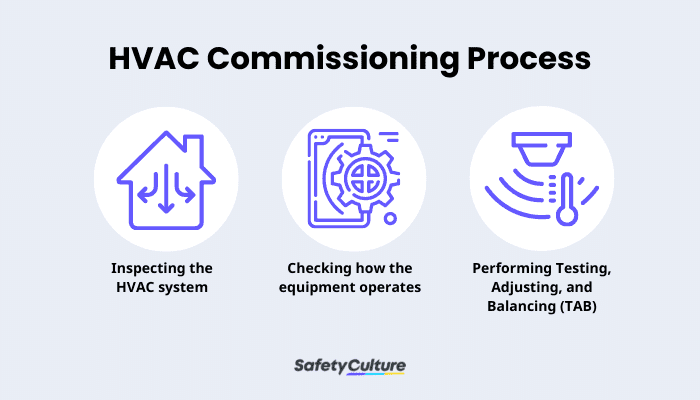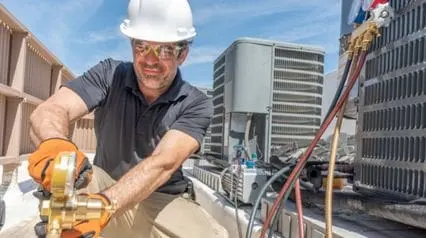What is HVAC Commissioning?
Referring to the process of ensuring that the HVAC (Heating, Ventilation, and Air conditioning) systems of buildings operate correctly and serve their intended purpose, HVAC commissioning is considered to be a vital part of the overall construction process—from designing, building, managing, and maintaining an HVAC system. Typically, HVAC commissioning is applied to the two most common examples which are commercial and residential.
Importance
Building owners, contractors, and engineers must have proper documentation on how the HVAC systems are functioning. This is so they can pinpoint and resolve issues, and further improve HVAC performance. Also, HVAC commissioning is vital to ensure that the project requirements are met and to avoid the need for repairs and callbacks in the long run.
Benefits
Take a look at how HVAC commissioning benefits various settings:
Efficiency
In the general context of commercial buildings, HVAC systems are usually one of the biggest energy consumers. If the installation doesn’t operate correctly, it can affect the overall performance of the system and further increase energy consumption.
Safety
In the workplace, a well-functioning and properly maintained HVAC system is essential to provide employees with a safe, comfortable, and pleasant working environment. This makes the workplace conducive to productivity and helps in avoiding heat stress, which, if not addressed, can then lead to heat illness.
On the other hand, the US Office of Energy Efficiency & Renewable Energy (EERE) cites that the Centers for Disease Control (CDC) and the American Society of Heating, Refrigerating and Air-Conditioning Engineers (ASHRAE) recommend that building owners and contractors must perform measures to ensure that HVAC systems are functioning properly, especially for schools, among others.
Achieve operational excellence
Cultivate a culture of excellence with our digital solutions that enhance efficiency, agility, and continuous improvement across all operations.
Explore now3 Main Types of HVAC Commissioning
Similar to the main types of the general commissioning process, the method of HVAC commissioning also takes various forms:
- Initial Commissioning: Such a process is done to HVAC systems that are less than a year old, and those that are first installed in new or existing buildings. This may also refer to post-construction commissioning.
- Retro-Commissioning: On the other hand, this type of commissioning is performed on HVAC systems that are more than a year old, and haven’t been commissioned yet when the building’s construction was completed.
- Re-Commissioning: This happens when the building owner wants to verify, enhance, or document how the current system works. Hence, re-commissioning applies to existing HVAC systems that were commissioned already and need another process of commissioning.
It’s important to note that before any construction work begins, the type of HVAC commissioning must be determined according to how the building or infrastructure requires it.
Process
HVAC commissioning must also be part of the 4 stages of building construction to carry out its most effective results. Here’s a brief overview of an ideal process:
- Pre-design: The draft of the initial commissioning plan, which contains the detailed processes and guidelines in building construction, must also include the building owner’s expectations of how the HVAC system should operate. This is to ensure that the necessary commissioning team will be assembled and the standard requirements will be met.
- Design: HVAC commissioning engineers and providers must work hand-in-hand with mechanical contractors to be aligned with the commissioning requirements based on the needs of the building.
- Construction: HVAC commissioning in the construction phase usually involves thorough verification of the system if the correct equipment was delivered to the site. As such, any changes to the contract documents must be recorded accordingly.
- Occupancy: During this phase, the HVAC commissioning plan or manual must be created so that stakeholders have a guiding document moving forward.
Moreover, the HVAC commissioning procedure involves the following steps:

HVAC Commissioning Process
Inspecting the HVAC system
Once the mechanical contractor confirms the successful installation of the HVAC system, it’s now up for a thorough check by an HVAC commissioning engineer. The verification process involves assessing if the equipment has been correctly installed in its proper location. Moreover, commissioning engineers are in charge of ensuring that the installation is up to the requirements of the manufacturer. Using standardized checklists in conducting HVAC maintenance, inspections, and commissioning is highly recommended.
Checking how the equipment operates
Now that the installation is verified, HVAC engineers or operators now have to observe the equipment and how it’s working. Through in-depth inspection and documentation, they need to double-check and record the equipment’s key functions: startup, shutdown, and sequence of operation. If and when system issues arise, those are then reported to the mechanical contractors in a timely manner.
Performing TAB
Once installation, verification, and observation are all done, the HVAC system is now ready for Testing, Adjusting, and Balancing (TAB). TAB is the systematic method of calibrating HVAC units and it is conducted by HVAC contractors, especially on commercial buildings. Its goal is to measure, adjust, and improve air and water flows to meet specific requirements and achieve optimal air quality. Ultimately, conducting TAB in the commissioning of HVAC systems helps in maintaining their overall performance and life span.




